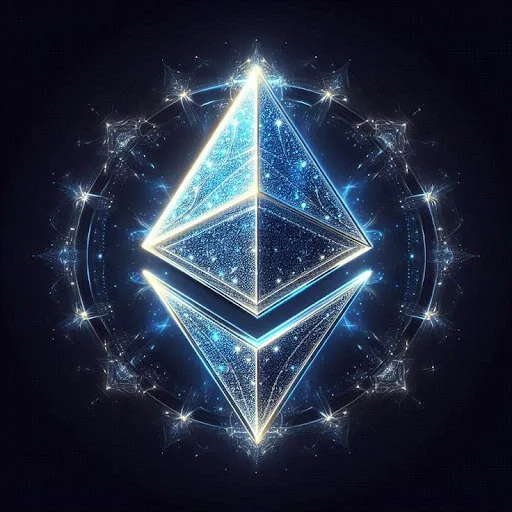The decentralized finance (DeFi) sector is undergoing a profound transformation. Once the unchallenged leader of the space, Ethereum is now witnessing its dominance slowly diminish as a wave of competing blockchains enter the scene. Recent metrics reveal that the total value locked (TVL) in DeFi stands at approximately $117.86 billion, but Ethereum’s share has declined from 56.38% at the start of 2025 to 51.24% in May—a significant drop that hints at a changing landscape in the world of blockchain finance.
Ethereum’s Shrinking DeFi Market Share
Ethereum continues to hold the largest portion of TVL in the DeFi ecosystem, but the gap between it and its rivals is narrowing. In early 2021, Ethereum controlled over 91% of DeFi TVL. Fast forward to May 2025, and that figure has shrunk to just over 51%, a decline of nearly 40% in just over four years.
While Ethereum still maintains a lead in several categories—such as non-fungible token (NFT) sales, tokenized U.S. Treasury assets, and the total value of stablecoins on its network—its relative influence in DeFi is being challenged more than ever.
The Rise of Competitor Blockchains
A new wave of DeFi-capable blockchains is steadily gaining traction, offering faster transaction speeds, lower fees, and innovative new features that appeal to developers and users alike. Among the most notable challengers are Solana, Bitcoin (via Layer 2 solutions), Tron, and Binance Smart Chain (BSC).
As of May 2025:
Solana commands 7.99% of the total DeFi TVL, making it the second-largest blockchain by this metric.
Bitcoin, historically not associated with smart contracts or DeFi, now contributes 5.67% to the total DeFi TVL through various scaling solutions and decentralized applications.
Tron holds 5.64%, just a fraction behind Bitcoin.
Binance Smart Chain follows closely with 5.44% of the total.
Emerging platforms such as Arbitrum, Base, Avalanche, Sui, Berachain, and Hyperliquid are also gaining momentum, showing that DeFi activity is diversifying across many ecosystems rather than concentrating on a single chain.
Why Ethereum’s Lead Is Fading
Several factors are contributing to Ethereum’s gradual decline in DeFi market share:
1. High Gas Fees: Despite Ethereum’s upgrades like the Merge and Shanghai, transaction costs remain relatively high during periods of heavy network congestion. Users and developers looking for cost-efficiency are turning to alternative blockchains.
2. Scalability Challenges: Ethereum’s Layer 2 solutions such as Arbitrum, Optimism, and zkSync have helped improve scalability, but competing chains like Solana and Avalanche offer high throughput directly on their base layer, reducing friction for new applications.
3. Increased Innovation Elsewhere: Many newer chains are attracting developers with tailored DeFi tools, grant programs, and ecosystem incentives. This has led to the rapid development of decentralized exchanges, lending platforms, and derivatives protocols on non-Ethereum chains.
4. Interoperability and Cross-Chain Liquidity: As DeFi matures, seamless movement of assets across chains has become more feasible through bridges and wrapped tokens. This has empowered users to explore DeFi opportunities outside of Ethereum’s network.
The Role of Bitcoin in DeFi
Bitcoin’s entrance into the DeFi space has surprised many, as it traditionally lacks native smart contract capabilities. However, new technologies like Bitcoin Layer 2 networks and sidechains (e.g., Stacks, RSK) are enabling decentralized applications and financial protocols to be built on or adjacent to the Bitcoin network.
These developments have contributed to Bitcoin’s growing share of the DeFi TVL. Moreover, Bitcoin’s unparalleled brand recognition and massive liquidity pool make it a powerful asset when integrated into decentralized financial systems.
A More Pluralistic DeFi Future
The data points to a maturing DeFi ecosystem where no single blockchain holds a monopoly on innovation or adoption. While Ethereum remains a powerhouse and will likely retain a leadership role for years to come, the rise of competitors suggests that the future of DeFi will be multi-chain.
This evolution opens up a more inclusive environment where different chains specialize in distinct areas—some focusing on ultra-fast trading, others on privacy, gaming, or real-world asset tokenization.
Key takeaways from this trend include:
Greater User Choice: Users now have the freedom to select platforms based on performance, cost, and use case rather than being tied to a single chain.
Developer Flexibility: Builders can deploy smart contracts on multiple chains, optimize for specific technical features, and reach new audiences with ease.
Risk Distribution: Spreading DeFi activity across multiple blockchains reduces systemic risk and avoids the pitfalls of over-reliance on a single network.
Challenges Ahead
Despite the promising diversification, DeFi still faces significant hurdles:
Security Risks: Cross-chain bridges and lesser-known platforms often carry higher risks of exploits and bugs.
Regulatory Uncertainty: Governments around the world are exploring regulatory frameworks for DeFi, which could impact adoption and innovation across all blockchains.
Liquidity Fragmentation: As DeFi protocols proliferate across many chains, maintaining deep liquidity pools can become challenging without robust interoperability solutions.
Conclusion: A Turning Point for DeFi
The ongoing shift in DeFi TVL distribution marks a pivotal moment in the evolution of blockchain-based finance. Ethereum’s early dominance gave the sector a strong foundation, but the landscape is now evolving into a vibrant, multi-chain environment fueled by innovation across multiple platforms.
While Ethereum still leads by several metrics, its share of DeFi activity is no longer unassailable. Platforms like Solana, Bitcoin Layer 2s, Tron, and others are proving they can compete—and thrive—in the decentralized finance space.
As we move deeper into 2025, the DeFi sector is likely to continue trending toward greater diversity, resilience, and cross-chain collaboration. For users, developers, and investors alike, this marks the beginning of a new chapter—one where the future of decentralized finance is truly decentralized.

Comments
Post a Comment